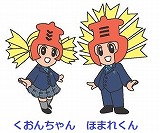2024年6月の記事一覧
第2回地球人カレッジ
6月18日(火)第2回地球人カレッジ@Jotoを開催しました。

The 2nd Global Citizen’s College @ Joto was held on June 18th.
The instructor was Lance Kita from Hawaii. He gave an entertaining talk on Hawaiian people and culture.
Lanceさんからの最初の質問は「ハワイに対するイメージは?」というもの。それに対して美しい海やフラダンス、ロコモコなど色々な答えが出てきました。
The first question from Mr. Kita was, "What is your image of Hawaii? The answers from the students were the beautiful ocean, hula, loco moco and so on.
ちなみにハワイ語でHulaとはダンスという意味、日本語ではフラダンスといいますが、「ダンスダンス」という意味になってしまうようですよ。
He also told us Hula means “dance”, so “Hula dance” means “dance dance”.
次は、ハワイの歴史について説明でした。
最初のハワイアンはポリネシアの島々からカヌーに乗ってきたとのこと。GPSもコンピューターもない時代、星、波、風、雲などの情報を使って遠く離れたハワイまでカヌーでたどり着いたなんてすごいですよね。当時の人びとは自然と調和した高度な文明を発達させたそうです。
Next, he told us about Hawaiian history.

その後カメハメハ王によって築かれたハワイ王国の話、多くの国々からハワイに仕事を求めて人びとがやってきた話をしてくださいました。サトウキビ農園での仕事は大変だったようですが新たなビジネスを始めて成功した移民も多いとのことです。ハワイで有名なコナコーヒーもその1つ。日本からの移民が始めたみたいですよ。
He then talked about the Hawaiian Kingdom established by King Kamehameha and how people from many countries came to Hawaii in search of work. He said that working on sugarcane plantations was hard work, but many immigrants started new businesses and became successful. One such business is Kona coffee, which is famous in Hawaii. It seems that Japanese immigrants started it.
このような歴史的背景は現在のハワイの食文化や言語にもつながっているそうです。
ハワイで定番のプレートランチ、メニューを見てみると韓国のカルビに、日本のトンカツ、アメリカのマカロニサラダに、中国の焼きそば、いろんな国の料理が一度に楽しめますね。
This historical background has led to Hawaii's current food culture and language.
For example, you can enjoy Korean kalbi, Japanese pork cutlet, American macaroni salad, Chinese yakisoba at the same time in a “plate lunch”, a Hawaiian standard menu.

He also talked about Pidgin English. For example, why you have habuteru face? He said it contains "habuteru," which means "be in bad mood" in the Hiroshima dialect.
日系4世のLanceさん、日本の文化も大切にしているようですが、ハワイの要素も混ざっているようです。例えばお正月にお餅を食べるようですが、Lanceさんおすすめの中身は「ピーナッツバターとチョコレート」とのこと。一度食べてみたいですね。
Mr. Kita, a fourth-generation Japanese American, seems to value Japanese culture, but he also mixes it with Hawaiian elements. For example, he eats mochi (rice cake) at New Year's. His favorite is peanut butter and chocolate mochi.
ハワイの文化や歴史について学べる楽しい時間をLance先生、本当にありがとうございました。次回の地球人カレッジ@JOTOは9月開催の予定です。
Thank you very much for an enjoyable hour of learning about Hawaiian history and culture. The next Global Citizen’s College @ JOTO is scheduled to be held in September.
〒770-0853
徳島県徳島市中徳島町1丁目5番地
TEL:088-653-9111
FAX:088-653-3103















